Not only is lavender beautiful to look at and smell, but it is also very useful and can be used in many ways. Because it smells nice and is good for you in surprising ways, lavender is more than just a pretty purple flower.
In this blog post, we’ll talk about all the different ways you can use this valuable plant to your advantage.
Health Benefits of Lavender Go Beyond Scent
Lavender is not only fragrant and nice to smell, but it is also very good for you. This part talks about how lavender can make a big difference in the health of your skin, hair, and even your cups.
Lavender oil is a powerful beverage
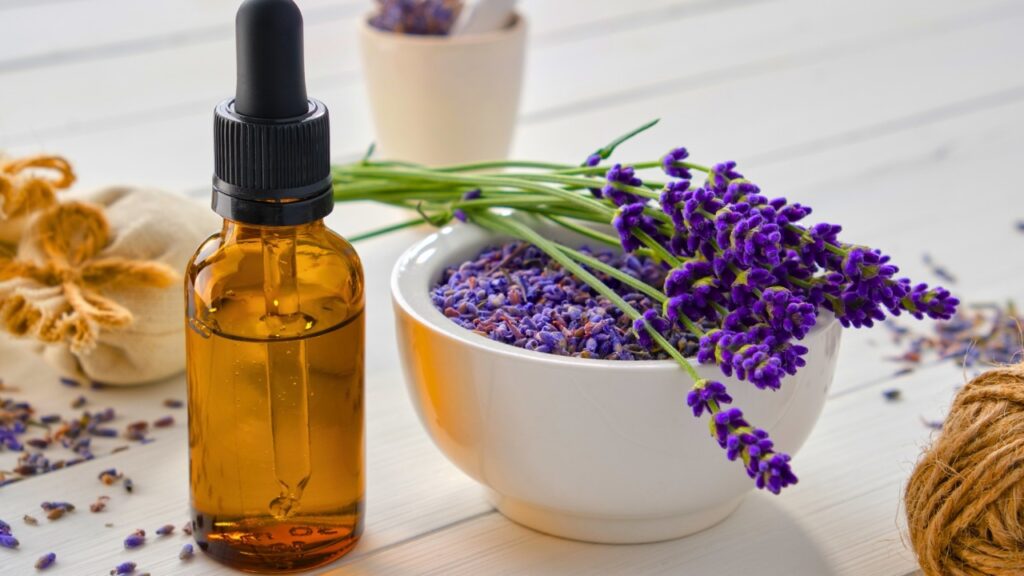
Lavender oil is more than just a nice smell; it’s a useful liquid that can help with many health problems. It is often used in aromatherapy to help people relax, and it is also great for natural skin care because it can soothe skin irritations. Let’s look at the many ways that lavender oil can make you feel better.
Lavender oil is often used in aromatherapy to help people who are stressed or anxious feel better because it has a scent that is known to relax people.
Soothing for the skin: Because it reduces inflammation, it can help skin problems like eczema and pimples.
As a sleep aid, putting a few drops on your pillow or humidifier can help you sleep better.
You can easily make your own lavender essential oil at home, which you might not believe. It’s easy to get the juice of your lavender plant:
Collect fresh lavender. To be sure of its purity, use lavender that was grown naturally.
Set the lavender out to dry. Leave it to dry in a cool, dark place for a few days.
Get the oil ready: Opt for a base oil like olive or almond. Put the dried lavender in a jar and pour the oil over it.
Put the oil in: Cover the jar, and leave it in the sun for a few weeks, shaking it every now and then.
After a few weeks, strain the oil through a fine mesh and store it in a dark glass bottle.
Using lavender on your skin
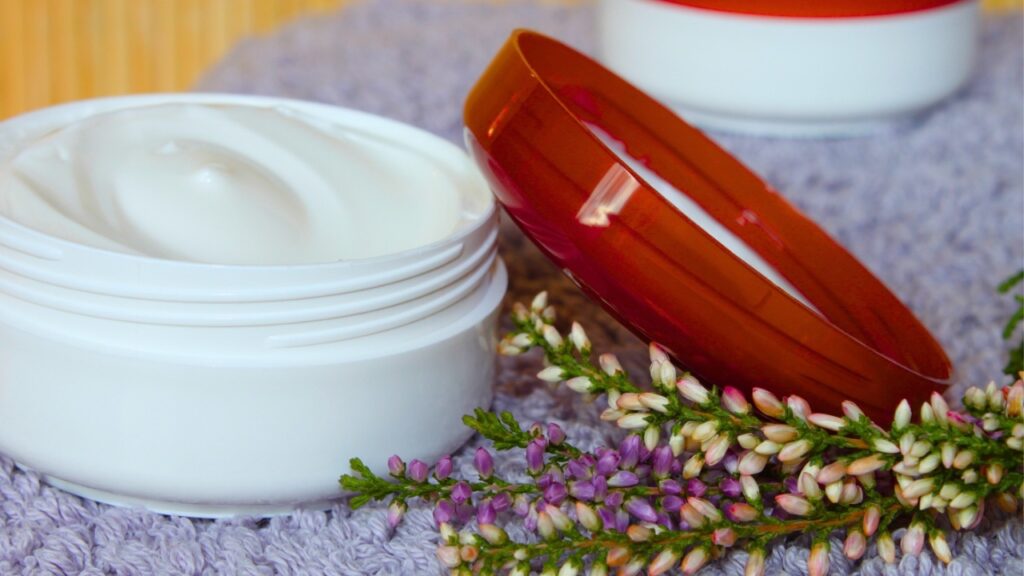
Lavender is great for skin care because it soothes inflammation and kills germs. Here are some ways that lavender can help your skin care routine:
Lavender’s antibacterial properties help get rid of bugs that cause acne.
Taking care of eczema and inflammation: Lavender can help with eczema flare-ups and lessen swelling.
Healing small burns: Because it is naturally antiseptic, it helps heal small cuts and burns.
It’s easy to use lavender in your skin care routine. You can add a few drops of lavender essential oil to coconut oil or use oil that has lavender in it to make your own face mask.
Lavender for thick, beautiful hair

Lavender oil might be the one thing your hair care routine is missing. People think it helps hair grow and keeps the skin healthy. This is why:
Lavender oil can stimulate the skin and possibly stop hair loss, which can help hair grow.
Fighting dandruff: Its antifungal qualities soothe the scalp and help get rid of dandruff.
Adding shine: This oil can give your hair a healthy shine.
You can put a few drops of lavender oil on your skin before shampooing or conditioning, or you can add it to your shampoo or conditioner.
A Way To Get To Peaceful Sleep

The idea that lavender can help us sleep better is not just a myth; it’s backed by science. It’s true that lavender oil is a natural tranquilizer, which is why many people choose it to get a good night’s sleep.
A natural sleep sedative: lavender oil

Lavender’s calming effects can help calm the nervous system, which can help you sleep better.
There is scientific evidence that lavender oil can help you sleep better, not just a claim. It has been shown that lavender oil can
It helps cut down on the number of times you wake up in the middle of the night.
Increase the length of your sleep: Using lavender oil can help you sleep longer generally.
Improve the quality of your sleep: People who use lavender often say they sleep better and longer.
These are some ways you can use lavender oil as part of your bedtime routine:
Diffuser for aromatherapy: Before you go to sleep, put a few drops of lavender oil in your diffuser.
To make a pillow spray, put lavender oil and water in a spray bottle and light spray your pillow.
Apply lavender oil to your temples or wrists before bed by mixing it with a carrier oil. Coconut oil is a good choice because it has fatty acids that are good for your skin.
Remember that everybody behaves differently, so you may need to try a few different methods before you find the one that works best for you. Lavender has relaxing features that can help you fall asleep peacefully.
What Dried Lavender Can Do for You?

Dried lavender isn’t just for looks; it can also be used in many different ways to make your home and kitchen more elegant and fragrant. Let’s look at some creative and useful ways to use dried lavender leaves.
Different ways to use dried lavender leaves
There are many things that can be done with dried lavender leaves. Here are some creative ways to put them to use:
To make your own natural potpourri, mix dried lavender leaves with other dried flowers and spices.
Lavender sachets: Put dried lavender in small fabric bags and put them in boxes and closets to freshen the air.
Wreaths: Use dried lavender to make beautiful wreaths for a rustic and fragrant look in your home.
When you cook with dried lavender, it can give your food a unique taste. Here are some ideas for food:
Infused sugars: Mix sugar with dried lavender to make a sweetener that smells good in tea and baked goods.
Herbal teas: For a soothing homemade tea blend, mix dried lavender with other herbs.
Dried lavender can be finely chopped and mixed into butter to make lavender butter, which can be used to spread on bread or in cooking.
More than fragrance: lavender leaves
Not only do dried lavender leaves smell wonderful, but they can also be used in many important ways:
A pinch of dried lavender can be added to savory meals like roast chicken or lamb to give them a subtle, fragrant flavor.
As a way to relax, you can make a soothing bath soak by adding dried lavender leaves to hot water.
Cleanser from nature: Add dried lavender to vinegar to make a pleasant cleaner that can be used for any job around the house.
Try these ideas and see how dried lavender can be used in different ways in your daily life.
Aromatherapy And Personal Care With Lavender

Lavender is used in a lot of aromatherapy and personal care items because it has a nice, relaxing smell. Because it is soothing, it can be added to soaps and lotions to make your home feel like a spa.
Softening creams and soaps
It’s easier than you think to make your own lotions and soaps with lavender in them. These are some easy recipes:
Soap with lavender:
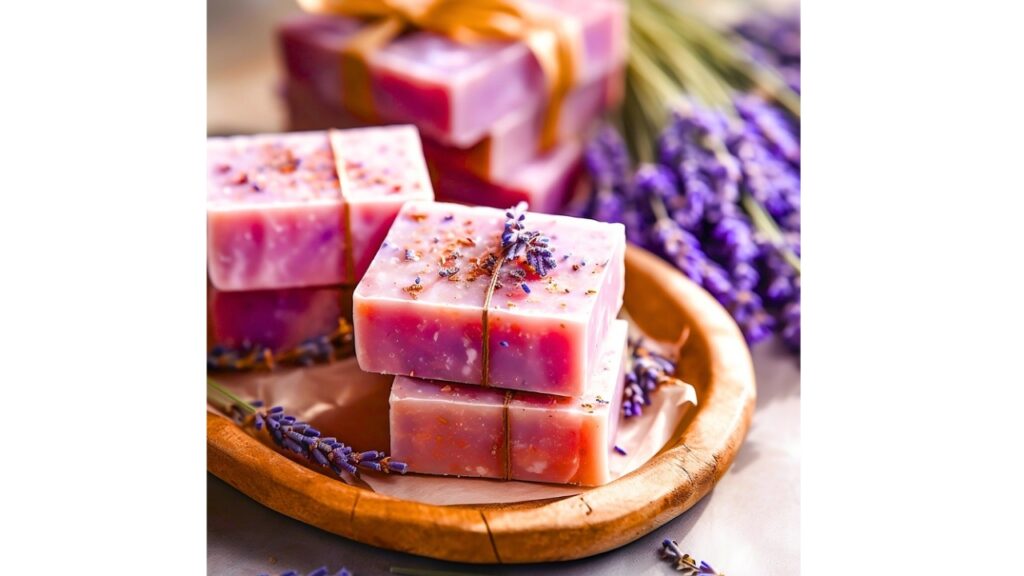
Do this in two separate pots of water.
Use a few drops of lavender oil and dried lavender buds to mix it in.
Put it in molds and wait for it to harden.
Have fun using your homemade lavender soap to calm down.
Lotion with lavender:

Make a lotion base that doesn’t have any smell.
Add the lavender essential oil and mix it in well.
Put in a few drops of vitamin E oil to help you relax even more.
Your lavender lotion is now ready to hydrate and calm you down.
Not only do these homemade goods nourish your skin, they also smell nice and help you relax.
Making flower bouquets and lavender sachets

Do some do-it-yourself projects with lavender to bring a little of nature’s peace into your home. Not only are lavender sachets and dried flower arrangements pretty, they are also useful.
Sachets of lavender:

Put dried lavender buds in small cloth bags.
For a stronger lavender scent, add a few drops of essential oil.
Close the bags by sewing or tying them.
For a nice smell, put them in drawers, closets, or even under beds.
Flower designs made of dried lavender:
Get a bunch of different dried flowers, like lavender.
Put them in a bowl or make a bouquet out of them.
Put them up in your home to add a natural, smell-good touch.
You can give these lavender projects as gifts or use them to decorate your home. They bring some of the peace and quiet of the garden inside.
Lavender’s secret skills: killing germs and comforting
It’s more than just a pretty plant that smells nice. This herb from the Mediterranean has secret powers thanks to a strong chemical called linalool. This chemical gives the herb its antimicrobial and calming effects.
Linalool is lavender’s secret ingredient that gives it its power.
Linalool is a terpene alcohol that is naturally found in lavender and other plants that smell good. This chemical is a big part of what gives lavender its unique smell and its healing properties. Because of linalool, lavender is a great health and wellness friend:
Effects that calm: Linalool has been looked at to see if it can help lower stress and anxiety. The way it works is by affecting the neurotransmitter systems in the brain. This makes the mind and body feel calm.
Powerful antimicrobial properties: Linalool has strong antimicrobial properties that make it effective against some bacteria and fungi. Because of this, lavender is a natural choice for cleaning and healing small cuts and scrapes.
Learning about the science behind lavender’s main ingredients, like linalool, helps us understand how useful this plant is. Lavender is unique not only because of its lovely look and smell, but also because it has strong health-boosting properties.
Lavender Is Used In Modern Medicine
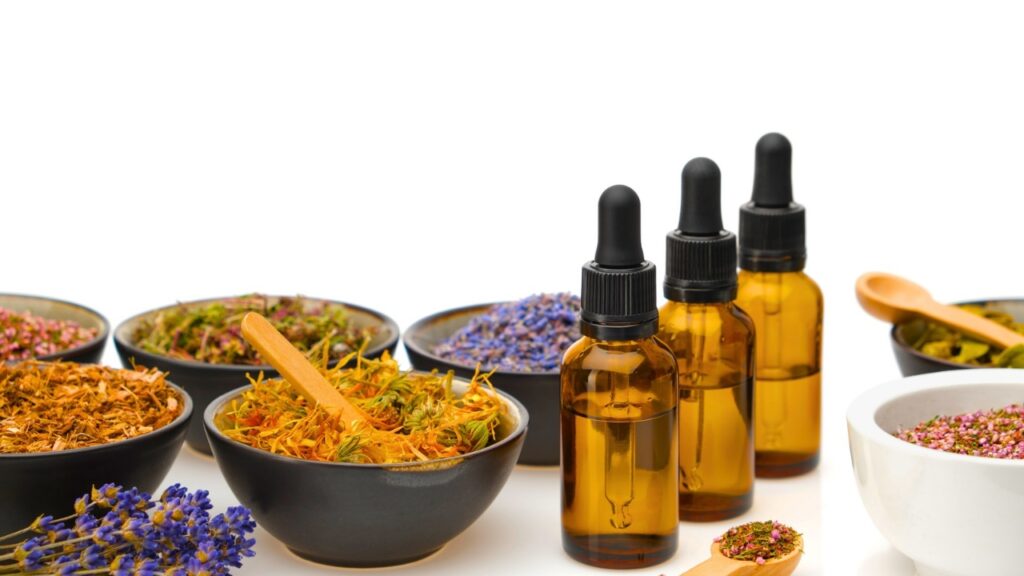
The fact that lavender made it from the yard to modern medicine shows how powerfully it can heal. It is becoming more important to health and fitness as it is added to supplements and known for its antioxidant properties.
Lavender nutrients and wound healing
The therapeutic properties of lavender have paved the way for its inclusion in different supplements. Here’s how lavender is making a mark in the world of modern medicine:
What part vitamins play: Lavender is widely found in natural health supplements aimed at reducing anxiety, improving sleep, and enhancing overall well-being.
Wound healing: Lavender’s antiseptic and anti-inflammatory properties make it helpful in the healing of minor wounds and burns. It helps in lowering inflammation, promoting faster healing, and minimizing scarring.
Incorporating lavender supplements into your routine or putting lavender-infused products to wounds can offer a natural and effective approach to healing.
Wound healing with lavender supplements
Lavender has been used in many supplements because it is thought to have healing qualities. Today, lavender is making a difference in the field of medicine in these ways:
What part vitamins play: Lavender is being used more and more in natural health supplements that claim to help with stress relief, sleep, and general health.
Helps wounds heal: Lavender can help small wounds and burns heal because it is antiseptic and anti-inflammatory. It lowers inflammation, speeds up healing, and keeps scars from getting too bad.
If you want to heal naturally and quickly, taking lavender supplements or putting lavender-infused items on wounds can help.
lavender antioxidant properties
The antioxidant qualities of lavender are also helpful, and scientists are becoming more interested in them:
Fighting oxidative stress: Lavender has strong antioxidants that help protect the body from oxidative stress, which is a cause of many long-term illnesses.
Effects on aging: Lavender’s antioxidants can also fight the signs of aging by keeping skin safe from free radical damage.
With these qualities, lavender shows how it can be used to avoid health problems and improve long-term health. Lavender’s medical uses are likely to grow as more study is done, solidifying its place in the world of natural health solutions.
Lavender antioxidant effects
Lavender’s benefits extend to its antioxidant properties, which are getting attention in the scientific community:
Fighting oxidative stress: Lavender includes powerful antioxidants that help protect the body from oxidative stress, a factor in many chronic diseases.
Anti-aging effects: The antioxidants in lavender can also fight the signs of aging, protecting skin from free radical damage.
These properties show lavender’s potential in preventative health measures and its role in promoting long-term well-being. As research continues, the scope of lavender’s medicinal applications is likely to expand, solidifying its place in the world of natural health solutions.
Massaging and diffusing lavender is therapeutic
Lavender is great for massage therapy and home diffusion because it has a lovely scent and healing qualities. These apps can change your surroundings and your health by making it more peaceful and healing.
Aromatherapy massage with lavender
Using lavender oil in massage treatment can make the experience better, helping you relax and heal more deeply. Here are some ideas:
Add a neutral oil to thin it out: Before putting lavender essential oil on your face, you should always mix it with a carrier oil, such as coconut or almond oil.
Pay attention to relaxing: To add to the calming benefits of lavender, give yourself a gentle massage.
Ambiance is important: To get the most out of lavender aromatherapy, make the massage room more relaxing by adding soft lights and soothing music.
This mix of massage and lavender aromatherapy can help lower stress, ease muscle pain, and make you feel more relaxed overall.
Lavender uses in diffusers
A simple and effective way to create a calm area in your home, office, or during aromatherapy massage sessions is to diffuse lavender oil. Here’s how to get the most out of it:
Choose a good diffuser: We suggest the Urpower 2nd Gen Aroma Essential Oil Diffuser for diffusing lavender oil well. It was also named the best essential oil diffuser by the Wirecutter of the New York Times. Its design makes sure that the oil’s smell spreads as far as possible, filling the room with a soothing scent.
Recommended length of time for diffusion: To make a calm space, run the diffuser with lavender oil for thirty to sixty minutes.
Place is important: If you want to get the most out of lavender’s ability to calm you down, put the diffuser somewhere you spend a lot of time, like your bedroom or office.
Adding a reliable diffuser like the Urpower 2nd Gen Diffuser and lavender oil can make the atmosphere in your space much better, which can help you relax and think more clearly.
Experiments in cooking with lavender
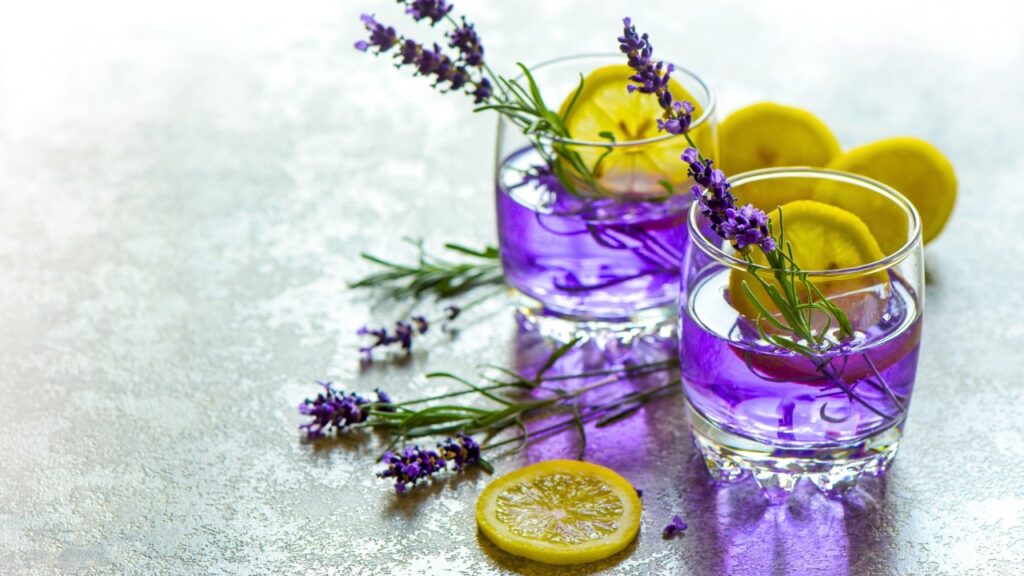
There are more uses for lavender’s unique taste than just aromatherapy and personal care. It’s also a great addition to food, especially Mediterranean food. When used in cooking, lavender can make ordinary recipes taste amazing. It can be used in everything from savory foods to sweet desserts and drinks.
How to use lavender in the kitchen
When you use culinary lavender in your cooking, you can be very artistic. Here are some creative ways to use it:
savory foods: A little dried lavender can be added to marinades, roasted veggies, or grilled meats to make them smell more interesting.
Desserts: Lavender and honey go well together in baked goods. For a cool taste, try adding lavender to ice cream and sorbet.
Teas with herbs: Adding a few lavender buds to your favorite herbal tea mixes can make them taste more relaxing.
Because lavender has a strong taste, remember that a little goes a long way.
Making Health: How To Make Lavender Tea

It tastes great, but lavender tea is also good for you in many other ways. It’s known to help people relax and sleep by slowing them down. It’s easy to make your own lavender tea:
Get some lavender buds: Lavender flowers can be used fresh or dried. If you use fresh, make sure they are clean and free of pesticides.
Heat water: Bring cold, fresh water to a boil first.
Let the lavender steep: Put the lavender buds in a tea bag and put it in your cup. Put the buds in hot water and let them soak for five minutes.
Strain and have fun: Take the tea out of the infuser and enjoy it. You can add honey or a slice of lemon to make it sweeter and taste better.
Having lavender tea before bed or in the morning can help you relax and feel refreshed.
Lavender repels naturally
In addition to being used in cooking, lavender is a natural way to keep bugs away:
To keep mosquitoes away: To keep bugs away, put dried lavender sachets near windows or outside.
Keeping moths away from closets: Hang lavender sachets in your room to keep moths away from your clothes.
This method is natural and doesn’t use any chemicals. It keeps bugs away and gives your space a nice lavender scent.
Making lavender cocktails without booze
Lavender-infused cocktails are a great choice for people who want a cool drink without the alcohol:
Lemonade with lavender: Simple syrup with lavender added to it should be mixed with fresh lemon juice and bubbly water.
Adding a few lavender buds to your iced tea will make it taste better and help you relax in the summer.
These lavender cocktails don’t have booze in them, but they taste great and add a unique touch to your summer parties.
Instead of salt, use lavender
Lavender can also be used in cooking as a healthy and tasty salt replacement in a number of dishes:
Mixes of spices: There is no salt in this seasoning mix because it is made of ground lavender and herbs like rosemary and thyme.
Dressings for salad: You can give your salads a new taste without adding extra salt by adding lavender to the vinegar or oil.
A healthy way to improve the taste of your food while lowering your sodium intake is to try lavender as a salt replacement.
Digestive Lavender: Calm Your Stomach

Not only is lavender known for having a soothing smell, but it can also help with stomach problems. Because it is gentle, it can help with a number of stomach problems.
What lavender does to help with digestion?
By adding lavender to your wellness practice, you can improve your digestive health:
Putting an end to stomachaches: Lavender tea can help ease stomach aches and heartburn.
Lowering gas and bloating: Because it relaxes muscles, it can help lower gas and bloating.
Getting rid of digestion problems: Eating lavender on a regular basis in small amounts may help your digestive system work better.
If you have stomach problems, lavender can help in a gentle and natural way. You can use it in teas, infusions, or food.
First things First: Learn About Lavender’s Side Effects
There are many good things about the lavender plant, but it’s important to use it safely and know what side effects it might cause.
Lavender safety and side effects
It’s important to know how to use lavender safely:
Allergic responses: Lavender may cause allergic reactions in some people. Before putting it on your skin, you should do a patch test.
Interactions with medicines: Lavender can cause problems with some medicines, so if you’re on any, talk to your doctor.
Using during pregnancy: Women who are pregnant or nursing should be careful when using lavender and should talk to their doctor first.
If you know about these things, you can get the benefits of lavender while reducing the risks.
This guide should make you want to use lavender in all the different ways it can be used.
Lavender is useful and healthy in many ways, including for cooking, beauty, and health. There is a lot to learn and enjoy about this plant. Its scent is used in massage, it heals skin, and it tastes great in the kitchen.
Remember to use lavender safely at all times, and enjoy the peace and happiness it brings to your daily life. Have fun looking!

